Within the ranges of Favini’s ecological papers produced according to the logic of the circular economy and upcycling, the latest product concept is Refit.
Favini’s new paper Refit is made with residues from wool and cotton textile production, which, due to an upcycling process, become a new alternative raw material for paper production. Two versions of Refit paper were created from one single idea of circular economy: Wool and Cotton.
Refit continues the practice of circular economy for the production of ecological papers, first undertaken by Favini back in the 90s with Shiro Alga Carta, followed by Crush in 2012 and Remake in 2015.
From an industrial symbiosis between textile and paper sectors, the ecological papers Refit Wool and Refit Cotton are created: The by-products of wool and cotton processes now become a raw material for the production of high quality ecological paper, according to the logic of creative reuse in the circular economy.
After telling the life cycle of wool up to its transformation into the ecological paper Refit Wool in the article “From wool into the ecological paper Refit Wool”, now it’s time to reveal how the ecological paper Refit Cotton is created from cotton and its processing by-products.
Upcycling and industrial symbiosis: definition and case history
Upcycling literally means to use waste materials, that were to be thrown away and create new objects with a greater value than the original material. Upcycling is not one and the same as recycling, as it is something that goes further. Discover the difference and case studies in the article about Upcycling.
Industrial symbiosis is the process in which traditionally separate industries integrate their processes to promote competitive advantages through an exchange of materials, energy and by-products – as in the case of Favini and its ecological papers.
Thanks to the cooperation generated by industrial symbiosis, it has made possible the creation of a new product: Refit, the ecological paper by Favini, created thanks to the collaboration and the exchange of by-products between paper and textile sectors. Where do these by-products originate and how are they used to produce the ecological paper Refit? Read on to discover the life cycle of cotton and its transformation into Refit Cotton paper.
Refit Cotton: A circular economy case history, from cotton to eco-sustainable paper
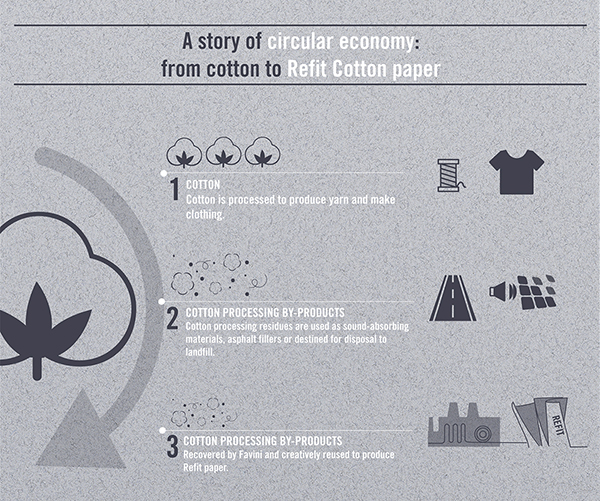
Cotton is a textile fibre that is obtained from the cotton wool that wraps the seeds of cotton plants. Together with wool, it is one of the most used fibres. The cotton fibre used for textile production is very long, soft and extremely shiny, it is obtained from the hair wrapped around the seeds. These hairs are made of pure cellulose and it is from where the fibre is obtained.
The history of cotton is as old as the birth of civilization. Its discovery dates back to around 7,000 years ago, the first evidence is in Peru where it is believed that the fibre, obtained from the seeds of the Gossypium plants, was already used by the Aztecs. [1] Although cotton has been cultivated since ancient times, its widespread use is due to the invention at the end of the 18th Century of the cotton gin machine. Today it is the most used natural fibre fabric for clothing to produce shirts, t-shirts, denim jeans, as well as being widely used in the furniture sector. [2]
Cotton fibre yarn is obtained through spinning, a term by which we mean the set of operations necessary for the transformation of textile fibre into yarn.
In industrial spinning, the processing phases start with cleaning and washing, moving on to the phases of opening, beating, carding and combing of the fibre, which untangles and sorts them. In the final spinning phase, the cotton is transformed into a thread with a predetermined fineness and twist. The thread is stretched and twisted by the spinning machine until the desired yarn is obtained. After the spinning, we proceed to the weaving phase, which is how the fabric is obtained from the cotton yarn.
During these processing stages, by-products are generated: these are the fibres that, due to their short length or other inadequate characteristics, are discarded. These are often found as fibres that break loose from the structure of the yarn or machinery and settle on the side of the machines or are captured by the suction and filtration systems. Generally, these cotton processing residues are sent for use as sound-absorbing material or asphalt fillers, which gives a durable product, but one which is neither recyclable nor biodegradable and most of it is largely destined for disposal to landfill.
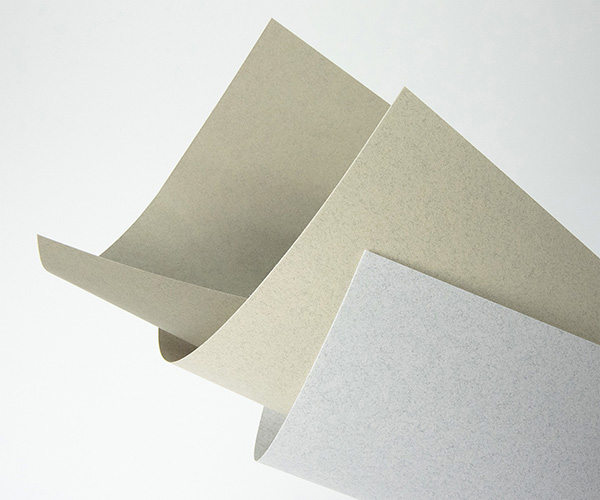
Favini has found a way to creatively reuse these cotton residues in paper production. Refit Cotton is produced, becoming a 100% recyclable and biodegradable ecological paper, printable and convertible creating an excellent high quality paper.
The content of Favini’s paper Refit Cotton includes 15% of fibre derived from cotton by-products, 40% post-consumer recycled cellulose and 45% of virgin cellulose fibres. For the production of Refit Cotton paper, the textile by-products used are of Italian origin and come from the spinning of cotton and it does not require the use of additional chemicals. The transformation process of cotton by-products into an alternative raw material for the production of paper involves a simple mechanical processing of fraying and cutting of the fibres.
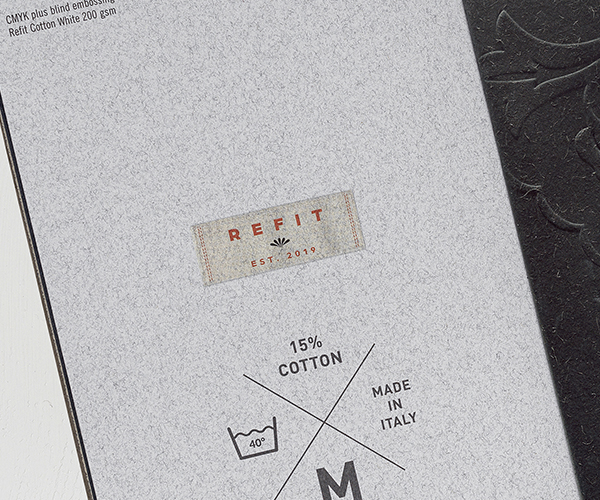
Refit Cotton distinctive for its crisp laundry look and feel that comes from its dark cotton content on the light base colour of the paper. It is versatile in print; suitable for all main printing techniques adding further value to Refit paper.
The visual book Refit “Cotton Wool” is an excellent example of this: The editorial project displays images printed on Refit paper using classic print techniques and finishing, as well as some unconventional methods to inspire you to try some new extraordinary techniques.
The combination of paper and cotton: from rags to ecological innovation
In the past, paper was obtained from rags, the origin of this material suitable for writing dates back to 105 AD in China. It was produced with used fabric, bark and fishing nets. In the 6th century, the Arab world started to produce paper by fraying and macerating rags in water.
Paper only became a means of mass communication many centuries later. Industrial paper production began in the nineteenth century, with the development of large print newspapers and the first best-selling books, which needed significant quantities of cellulose at cheap prices. With this increase in demand, the rags used for the processing of paper began to be scarce, and new materials were sought, such as the pulp obtained from wood. [3]
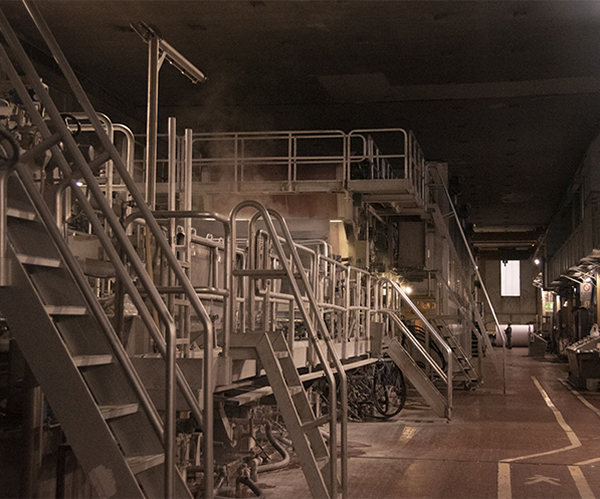
Thanks to Favini, now the by-products of the processing of cotton from the textile industries are an ingredient of the innovative ecological Refit paper. These are not the rags or old fabrics as they used to be in the past; Refit paper is made by Favini thanks to the principles of circular economy, enhancing the production residues of the cotton fabrics which are destined for use for example in the fashion and furniture sectors.
Refit and the paper that in the past was obtained from rags have in common their raw material: Cotton, but they are distinguished by the production process, the environmentally conscious use of resources and the application of the concept of creative reuse as a principle for the development of Refit paper.
Favini’s Refit paper is in fact the result of the search for new alternative raw materials for the production of innovative paper according to the principles of circular economy and thanks to the industrial symbiosis with the textile sector. The cotton used is the residue of textile processes that finds new life within the paper production cycle.
From textile residues to paper to create ecological packaging and design projects with Refit
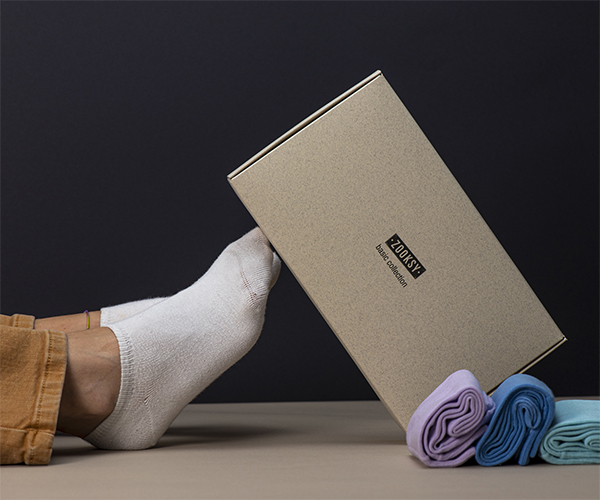
The ecological paper Refit, produced with 15% of cotton processing residues, is the ideal support for projects for the fashion world, such as packaging of clothing and accessories, labels, shopping bags and communication material.
The paper Refit Cotton has been used to create the Filpucci gift box from Carosello Lab, chosen specifically for its ecological characteristics and for affinity of theme between the content of the paper and Filpucci’s sector; textiles.
For more inspiration and application examples created with Refit, click and look at the dedicated Pinterest board.
Have you used our ecological paper Refit and would you like to share the result on our social channels? Send your piece of circular economy history to [email protected].
Click to find out more about Refit and request the sample.
FONTI
[1] algonatural.it
[2] wikipedia.org


